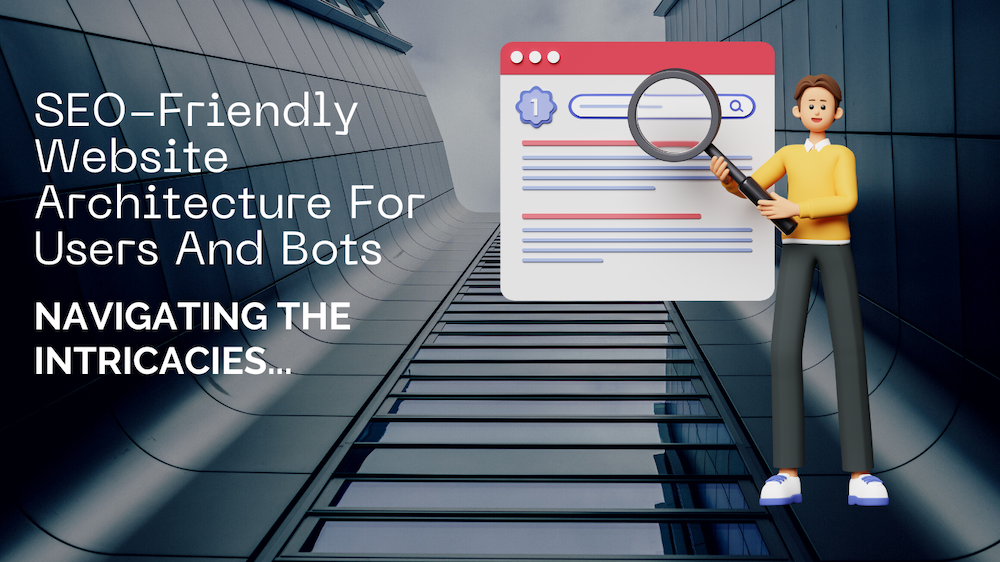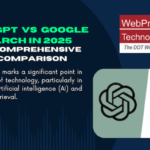The Crucial Role of Site Structure
In the vast digital landscape, where every click seamlessly transports us to a new destination, have you ever wondered about the intricate machinery behind the websites we visit? Much like a well-oiled engine propelling a car forward, the internal architecture of a website is the unseen force that powers our online experiences. Join me on a journey to unravel the secrets hidden beneath the pixels and discover how these virtual realms are meticulously crafted to deliver the content we seek.
The Foundation - Frontend Development
As we embark on our exploration, let's first peel back the layers of the frontend – the user interface that captures our attention. It's where design meets functionality, creating a seamless interaction between the user and the website. Statistics from a recent survey by W3Techs indicate that over 96% of websites use JavaScript, a powerful scripting language responsible for dynamic content and interactivity. Meanwhile, CSS and HTML, the building blocks of web design, shape the visual aesthetics and structure, ensuring a pleasing and organized display across devices. According to a study by HubSpot, a well-organized site structure increases the likelihood of higher search engine rankings by a staggering 2.3 times.
The Engine Room - Backend Development
Now, let's delve into the backend, the engine room where the magic truly happens. According to the BuiltWith Trends report, PHP, Python, and Ruby on Rails are among the most popular backend technologies. These languages enable the server-side processes that handle data storage, retrieval, and the dynamic generation of content. Databases, like MySQL, MongoDB, and PostgreSQL, store and organize vast amounts of information, ensuring that the right data is served to the user at the right time.
Connectivity - APIs and Communication
Our journey wouldn't be complete without acknowledging the role of Application Programming Interfaces (APIs) in enhancing connectivity between different systems. APIs enable seamless communication between a website and external services, contributing to the integration of features like maps, social media feeds, and payment gateways. According to ProgrammableWeb, there are currently over 25,000 public APIs, showcasing the interconnected nature of the web.
The Power of Content Delivery Networks (CDNs)
Imagine a world where websites load at a snail's pace, with images and videos buffering endlessly. Fortunately, Content Delivery Networks (CDNs) come to the rescue. CDNs distribute website content across multiple servers worldwide, reducing latency and enhancing the overall speed of page loading. According to Statista, the global CDN market is projected to reach over $30 billion by 2025, emphasizing their crucial role in optimizing online performance.
The Power of URL Structure
As we delve deeper into the SEO labyrinth, we encounter the guardians of your digital fortress – the URLs. These seemingly humble addresses hold the key to search engine success. Research reveals that shorter URLs tend to outshine their longer counterparts in search rankings. Additionally, the strategic inclusion of relevant keywords in your URLs serves as a potent enchantment, signaling the content within.
Think of your URLs as ancient scrolls, each with a unique tale to tell. Craft them with brevity and purpose, creating an enchanting path for search engine crawlers to follow. By doing so, you not only facilitate efficient navigation but also provide clear signals about the content's relevance, bolstering your chances of ranking higher in the search results.
Harnessing the Power of Internal Linking
In the enchanted world of SEO, internal linking emerges as the alchemist's secret formula. Ahrefs' research uncovers the mystique surrounding this practice, revealing that pages with a higher number of internal links are more likely to secure coveted spots in search engine results. Imagine your website as a vast library, with each internal link acting as a magical portal connecting one book to another.
Strategic internal linking not only guides users to related content but also forms a web of relevance that search engines find irresistible. By weaving these digital connections, you enhance the overall coherence of your website, creating a seamless journey for both users and search engine crawlers. The magic lies in the careful crafting of anchor texts and the intentional interlinking of related pages, giving your website an SEO boost that can't be ignored.
If your website developer has not focused on website architecture for SEO then the users and bots find themselves amidst a tangle of confusing pathways of loops or links which take a long time to reach the destination URL. A study by Ahrefs revealed that 94% of the pages on the average website receive no organic traffic – trapped in the depths of your digital maze, unseen and unheard.
This is where an optimized website architecture shines. It's like building a network of well-marked trails, making it easy for crawlers (and users) to discover every corner of your content kingdom. It's not just about aesthetics – it's about sending the right signals to search engines, maximizing crawlability, and distributing link juice (think of it as SEO currency) to the pages that matter most.
A study by Backlinko found that 57% of users bounce from a website if it takes more than 3 seconds to load. Just like explorers need a trusty map to navigate uncharted territories, your website needs a clear, SEO-friendly architecture to guide both search engines and users to the most valuable content.
Building the Bridge Between User Experience and SEO Nuances
So, how do we architect this oasis of discoverable content? Let's break it down into key principles:
- Flat is the New Fabulous:
Aim for a shallow website structure, where most pages are reachable within 3-4 clicks from the homepage. Think of it as a single-story villa instead of a towering skyscraper – easier to navigate and index. Backlinko's research confirms this, showing that websites with flatter structures tend to rank higher in search results.
A flat structure makes it easy for Google and other search engines to crawl 100% of your site’s pages.
- Internal Linking:
Let the Content Speak to Each Other: Imagine each page as a vibrant tribe within your content kingdom. Internal linking bridges the gaps, allowing ideas to flow freely and crawlers to hop from page to page, spreading that precious link juice. Moz, a leading SEO authority, highlights that strategic internal linking boosts authority for specific pages and improves overall site ranking.
- Navigation as Your North Star:
Think of your navigation menu as the compass pointing the way. Keep it clear, concise, and relevant to your website's core themes. A study by Nielsen Norman Group found that users spend the first 10-15 seconds forming a first impression of a website's usability – don't confuse them with a cluttered map!
- URLs: Speak the Language of Bots:
Make your URLs descriptive and keyword-rich. Think of them as street signs in your content jungle – clear, concise, and telling crawlers exactly what lies within. A study by Search Engine Land revealed that pages with keyword-rich URLs tend to rank higher in search results.
- Sitemaps: The Treasure Map for Search Engines:
Think of a sitemap as a detailed map of your entire website, highlighting every nook and cranny for search engines to explore. Submitting a sitemap doesn't guarantee indexing, but it does give crawlers a clear roadmap, as Google Search Central confirms.
Submit a XML sitemap for the bot. If the website has many URLs then have a HTML sitemap on the website for the user. These user-friendly visual maps serve as navigational aids, helping users find information effortlessly.
XML sitemaps cater to search engines, streamlining the indexing process, while HTML sitemaps enhance user experience by providing a user-friendly navigation system. A harmonious integration of both ensures that your website is not only search engine-friendly but also a pleasure for visitors to explore.
Measuring Your Progress
Remember, an SEO-friendly website architecture is an ongoing journey, not a one-time destination. Regularly monitor your website analytics to see which pages are getting traffic and which are languishing in the shadows. Tools like Google Search Console and Ahrefs can help you identify crawl errors, broken links, and areas for improvement.
By optimizing your website architecture, you're not just making life easier for search engines; you're creating a welcoming space for human visitors, too. A well-structured website leads to better user experience, higher engagement, and ultimately, more conversions.
Digital realm is a complex, interconnected ecosystem. The statistics and data presented throughout this exploration shed light on the tools and technologies that power our online experiences.
From frontend design to backend functionality, and the intricate web of APIs and CDNs, internal linking, navigation structure, each component plays a vital role in crafting the user experience we often take for granted. Next time you click your way through the web, remember the intricate machinery working tirelessly behind the scenes to bring the virtual world to life.
Sources:
Backlinko: https://backlinko.com/hub/seo/architecture
January 6, 2024





